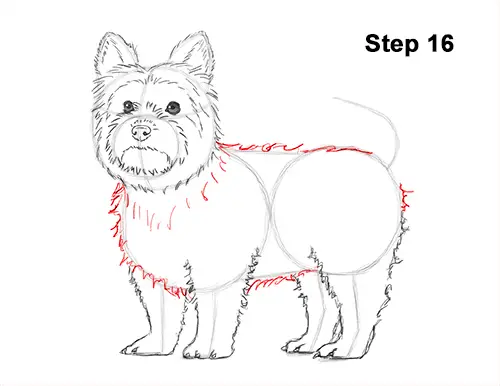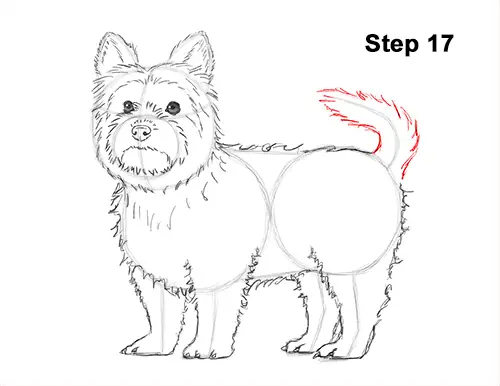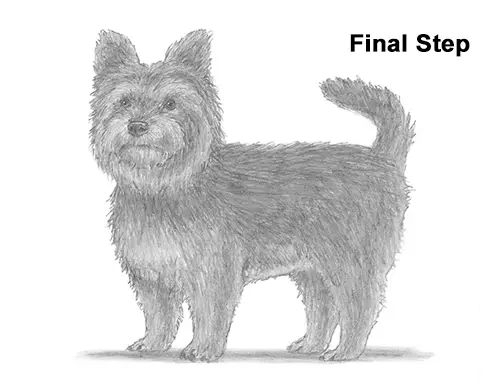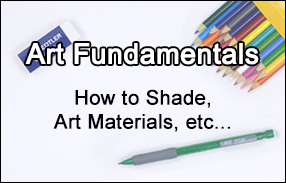
Step 15: Now use the lines on the right side as guides to draw the Yorkshire terrier's hind legs the same way. Remember to sketch lightly as you follow the guide and only darken the lines when you get the structure right. The hind legs should be a little bit wider at the top than the dog's front legs. Now draw the hind leg on the other side by using the last line as a guide. Use quick, short strokes throughout for the fur.

Step 16: Use the initial lines and shapes as guides to draw the body. Use quick, short strokes as you follow the path of the guides to represent the Yorkshire terrier's fur. The longer you draw these strokes, the longer the fur will appear.

Step 17: Follow the path of the short guide line on the right to create the Yorshire terrier's tail. Surround the line with short strokes for a furry texture.

Step 18 (optional): For a cleaner look, erase as much as you can of the initial guide lines. Don't worry about erasing all of the guides. It's okay to leave some behind. Re-draw any final sketch lines that you may have accidentally erased.

Final Step (optional): Add some shading to your Yorshire terrier's drawing to give it more dimension and volume. Pick the direction of the light source when shading so that the shadows are consistent with it. Add the value lightly at first, then gradually build up to the level of darkness that you want. Vary the pressure on your pencil to get different degrees of tonal value. Continue adding the value until the entire body has the appropriate shadows.
Add a cast shadow underneath. This helps ground the dog so it doesn't appear to be floating.
You can add even more value throughout your dog drawing for extra detail. Yorkies can have a variety of patterns on their coats but for a standard Yorkie, use a medium value for the entire head. Use quick, short strokes that go in the general direction of the fur as you cover the head with the medium value. Don't worry about shading too smoothly. The rough value gives the coat a furry texture. The fur on the chest and feet should be a medium value as well, while the fur on the dog's back and tail should be darker. Alternate between a dark value and a light value as you add the strokes to give the texture of the fur more volume. Shading can be time-consuming, so be petient and take breaks. It's always a good idea to use reference for a more accurate drawing. If you have a pet Yorkie or a similar breed, try to duplicate its pattern on your drawing. Don't forget to pause the video after each step to draw at your own pace.
Thanks for watching! Subscribe to the How2DrawAnimals YouTube Channel for a new tutorial every Tuesday.
To learn how to draw popular cartoon characters, visit EasyDrawingTutorials.com.







